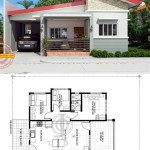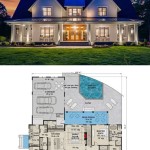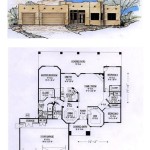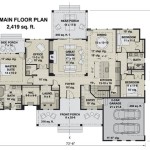How To Find House Plans For My House
Finding the right house plans is a critical first step towards building a new home or undertaking a significant renovation. The house plans serve as a blueprint, guiding contractors, defining construction timelines, and ultimately shaping the living space. Several avenues exist for procuring house plans, each with its own advantages and disadvantages. Understanding these options allows for a more informed decision that aligns with individual needs, budget constraints, and desired level of customization.
The process of finding suitable house plans begins with clarifying the desired characteristics of the home. Consideration should be given to factors such as square footage, number of bedrooms and bathrooms, desired architectural style, and accessibility requirements. Local building codes and zoning regulations must also be taken into account, as these may impose restrictions on building height, lot coverage, and setback distances from property lines. Neglecting these regulations can lead to costly delays and potentially necessitate revisions to the plans.
Once a general understanding of the desired home characteristics is established, the search for house plans can begin. This search can involve browsing online databases, consulting with architects, exploring builder portfolios, and purchasing pre-designed plans. Each of these methods offers a different approach to acquiring the necessary documentation for constructing a house, and the optimal choice depends on the individual's priorities and resources.
Utilizing Online House Plan Databases
Online house plan databases represent a readily accessible and comprehensive resource for exploring a wide range of architectural styles and layouts. These databases typically contain thousands of pre-designed house plans, searchable by various criteria such as square footage, number of bedrooms, architectural style, and foundation type. This allows potential homeowners to quickly identify plans that closely match their specific requirements.
One of the primary advantages of online house plan databases is the convenience they offer. Plans can be reviewed from the comfort of home, at any time of day, without the need to schedule appointments or travel to architectural offices. Furthermore, most databases provide detailed floor plans, elevations, and renderings, allowing for a comprehensive understanding of the proposed design. Many also offer virtual tours, allowing potential homeowners to experience the layout and spatial relationships of the house before committing to a purchase.
While online databases provide a wealth of information, it is essential to carefully evaluate the quality and completeness of the plans. Ensure that the plans are compliant with local building codes and zoning regulations. Further, verifying the credentials and reputation of the provider is crucial. Look for databases that offer guarantees or warranties on their plans, and that provide customer support to address any questions or concerns. It is also recommended to review customer testimonials and ratings before making a purchase.
Another important consideration when using online house plan databases is the level of customization offered. While pre-designed plans can be a cost-effective option, they may not perfectly align with individual preferences or site-specific conditions. Some databases allow for minor modifications to the plans, such as changing the location of interior walls or adding windows. However, more significant changes may require the assistance of an architect or structural engineer, which can increase the overall cost. Evaluate if the potential modifications align to the budget.
Furthermore, be aware of the licensing agreements associated with online house plans. Most plans are licensed for a single build only, meaning they cannot be used to construct multiple homes without obtaining additional licenses. Understand the terms and conditions of the license agreement before purchasing the plans.
Engaging the Services of an Architect
Engaging the services of an architect represents a more personalized and potentially more expensive approach to obtaining house plans. An architect works closely with the client to understand their specific needs, preferences, and budget constraints. They then develop custom house plans that are tailored to the individual's requirements and the unique characteristics of the building site.
One of the primary advantages of working with an architect is the level of customization and expertise they provide. Architects can create truly unique and innovative designs that reflect the client's individual style and lifestyle. They can also address site-specific challenges, such as unusual topography or restrictive zoning regulations. An architect can also assist with the permitting process, ensuring that the plans comply with all applicable codes and regulations.
The cost of architectural services can vary depending on the complexity of the project, the architect's experience and reputation, and the scope of services provided. Architects typically charge a percentage of the total construction cost, an hourly rate, or a fixed fee. Obtain a detailed proposal from several architects before making a decision, and carefully review the scope of services included in the proposal. It is important to establish a clear understanding of the fees involved and the payment schedule.
Another important consideration when selecting an architect is their design style and experience. Review the architect's portfolio to ensure that their style aligns with the client's preferences. Also, consider seeking references from previous clients to assess the architect's professionalism, communication skills, and ability to meet deadlines. Seek references and evaluate the architect’s communication skills.
The process of working with an architect typically involves several stages, including schematic design, design development, construction documents, and construction administration. During the schematic design phase, the architect develops preliminary sketches and concepts based on the client's requirements. The design development phase involves refining the plans and selecting materials and finishes. The construction documents phase involves creating detailed drawings and specifications that are used by contractors to build the house. During construction administration, the architect oversees the construction process to ensure that the house is built according to the plans and specifications.
Exploring Builder Portfolios and Pre-Designed Plans
Many builders maintain portfolios of their past projects, which can provide valuable insights into their design capabilities and construction quality. Reviewing these portfolios can help potential homeowners identify builders whose style and expertise align with their own preferences. Some builders also offer pre-designed house plans that can be customized to meet individual needs.
One of the advantages of working with a builder who offers pre-designed plans is the potential for cost savings. Builders typically have experience constructing these plans, which can streamline the construction process and reduce the risk of unexpected costs. Furthermore, builders may offer package deals that include both the house plans and the construction services.
However, it is important to carefully evaluate the quality and completeness of the builder's pre-designed plans, similarly to online plans. Ensure that the plans comply with local building codes and zoning regulations, and that they are detailed enough to guide the construction process. It is also recommended to obtain multiple bids from different builders to ensure that the price is competitive.
Before committing to a builder, conduct thorough due diligence. Check their licensing and insurance status, and seek references from previous clients. It is also important to review the builder's contract carefully and understand the terms and conditions. Ensure that the contract includes a detailed scope of work, a payment schedule, and a dispute resolution mechanism.
When exploring builder portfolios, pay attention to the level of customization offered. Some builders may be willing to make significant changes to their pre-designed plans, while others may only offer minor modifications. Clearly communicate your desired level of customization to the builder and obtain a written agreement outlining the specific changes that will be made.
Ultimately, the decision of how to find house plans depends on individual circumstances and priorities. Online databases offer convenience and affordability, architects provide customization and expertise, and builders offer pre-designed plans and construction services. The key is to carefully evaluate the available options and select the approach that best aligns with individual needs, budget constraints, and desired level of customization.

How To Find Building Plans For My House Architecture Design Plan

9 Ways To Find Floor Plans Of An Existing House Blueprints Archid

How To Find The Original Floor Plans For Your House

Where You Can Buy House Plans Live Home 3d

How To Get Blueprints Of Your House

How To Read A Floor Plan With Dimensions Houseplans Blog Com

House Plans How To Design Your Home Plan

House Plans How To Design Your Home Plan

House Plans How To Design Your Home Plan

House Plans How To Design Your Home Plan








